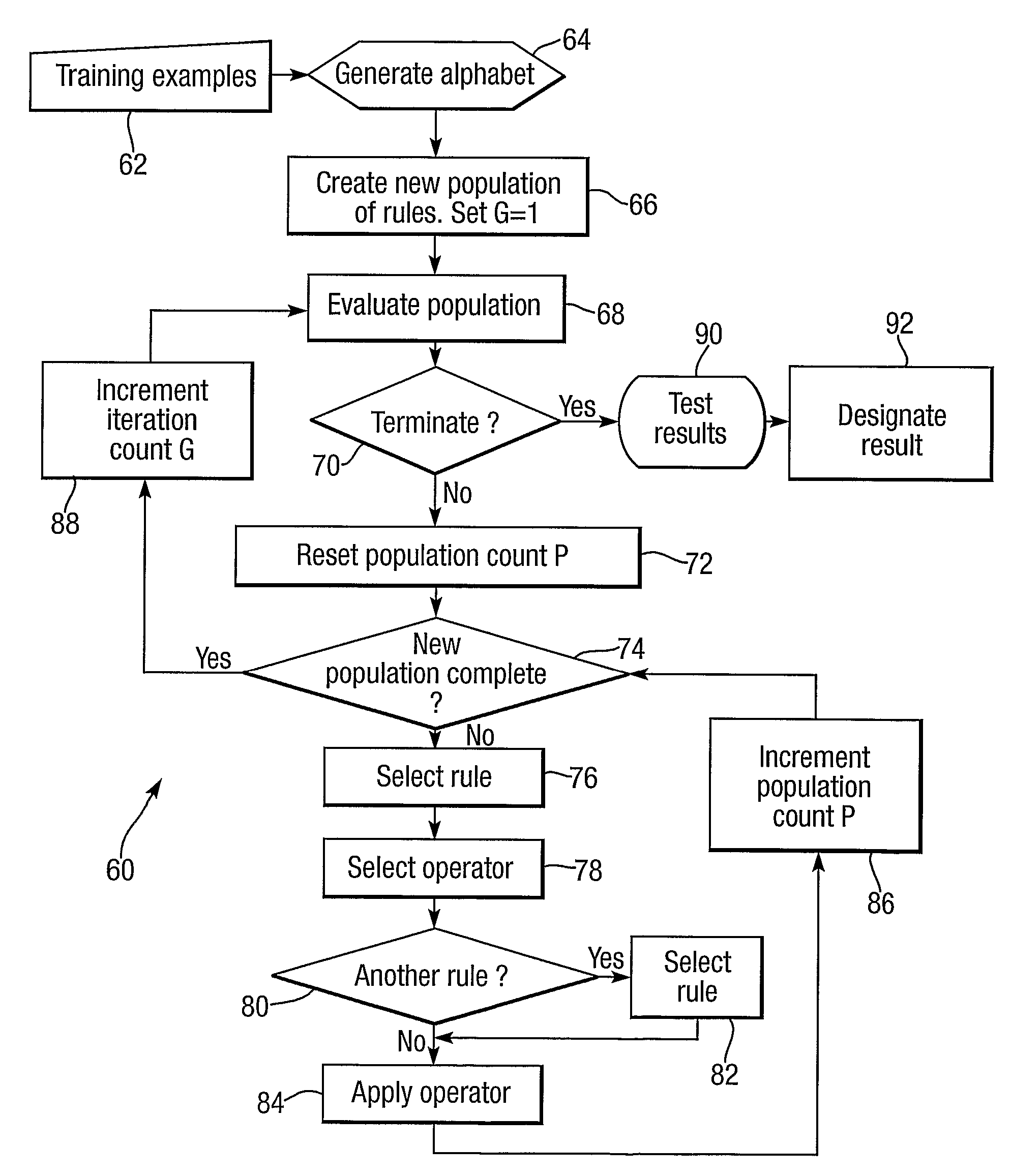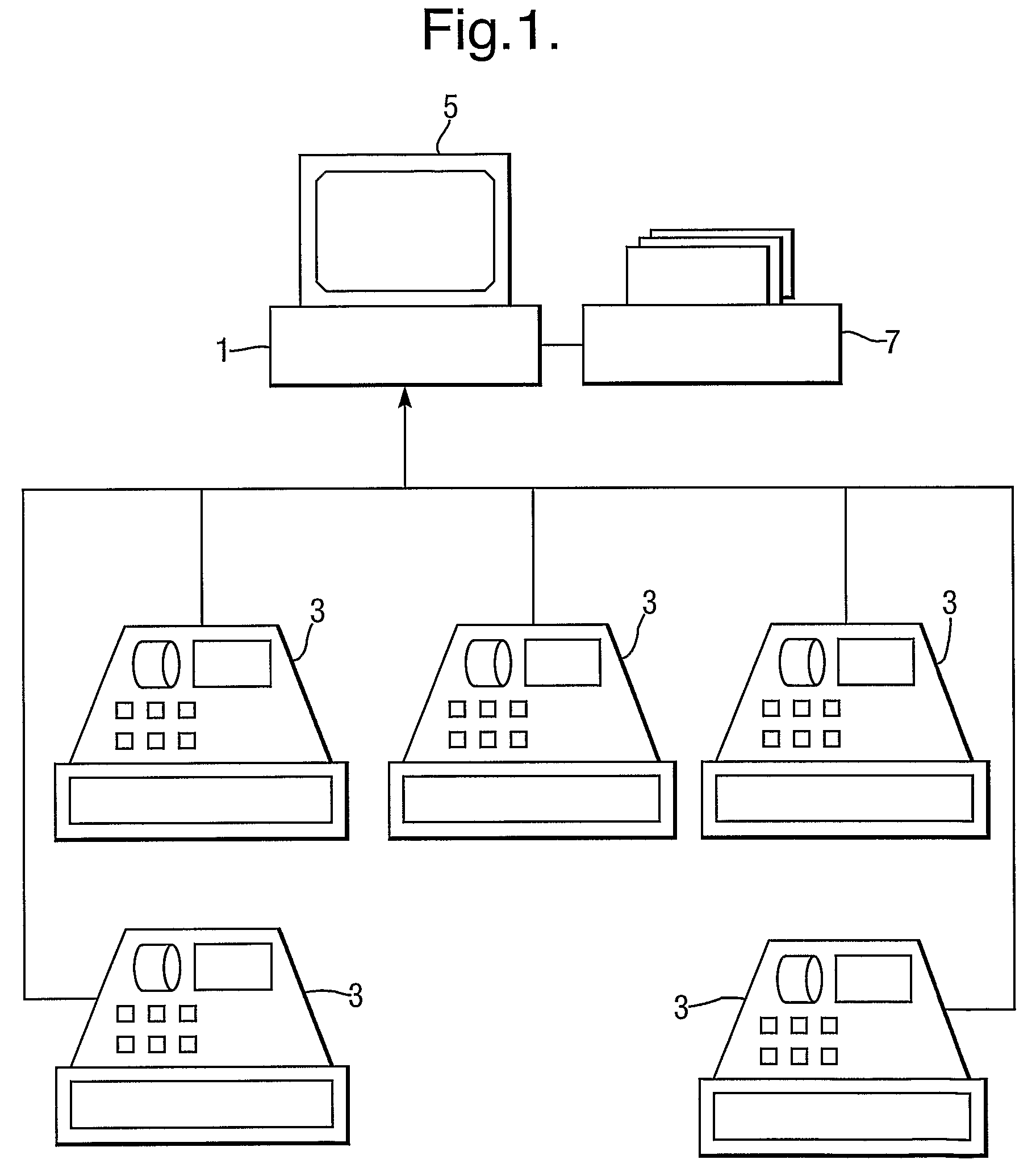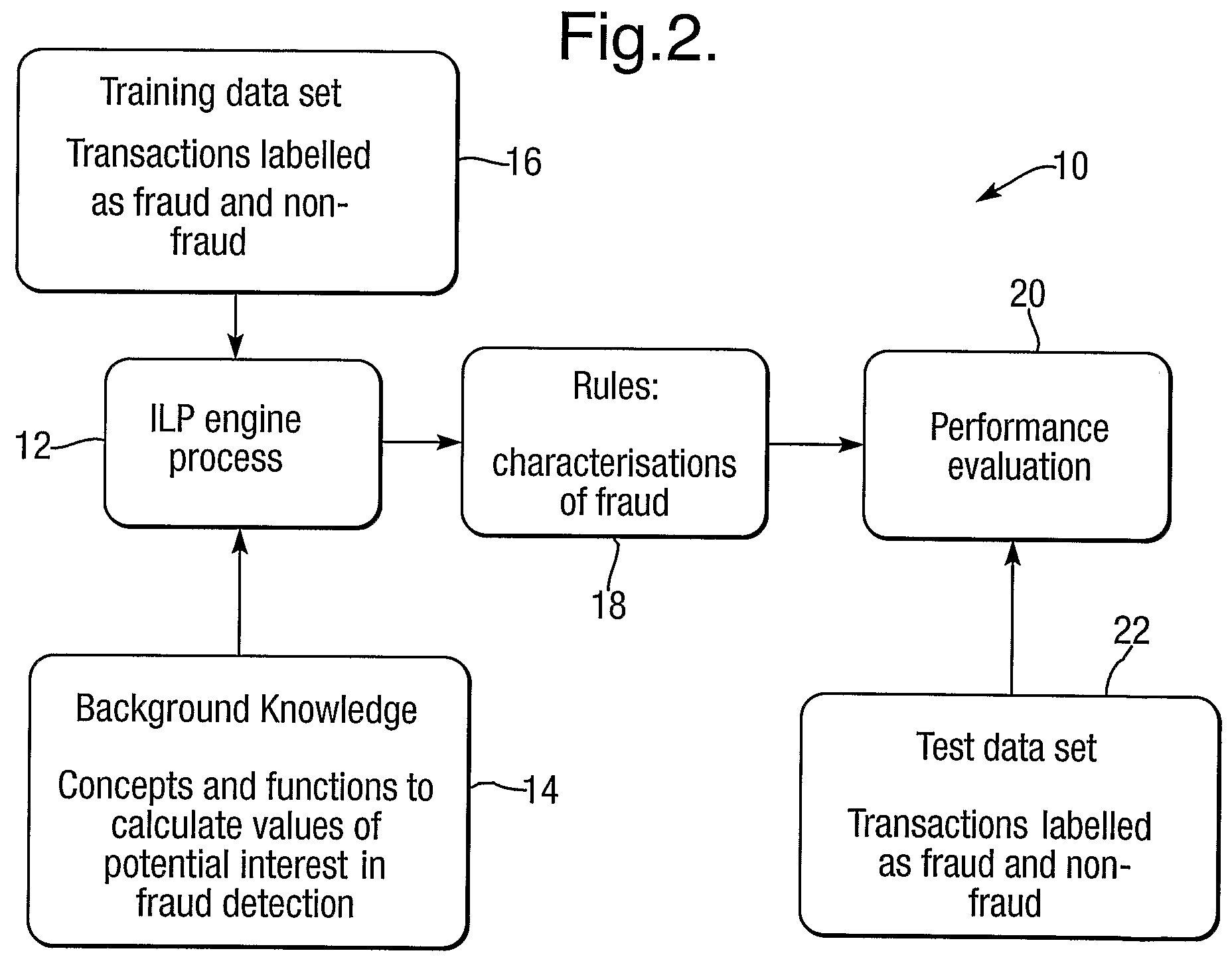Automated anomaly detection
a technology of anomaly detection and data, applied in the field of automatic anomaly detection in data, can solve the problems of inability to readily translate into recognisable rules, inability to generate rules by neural networks, and inability to identify anomalies, so as to avoid overfitting noisy data
- Summary
- Abstract
- Description
- Claims
- Application Information
AI Technical Summary
Benefits of technology
Problems solved by technology
Method used
Image
Examples
Embodiment Construction
[0091]One example of an application of automated anomaly detection using the invention concerns characterisation of retail fraud committed in shops by cashiers. The invention in this example may be used in conjunction with current commercial systems that can measure and record the amount of money put into and taken out of cashiers' tills. Various kinds of cashier behaviour may indicate fraudulent or suspicious activity.
[0092]In this example of the invention transactions from a number of different cashiers' tills were employed. Each transaction was described by a number of attributes including cashier identity, date and time of transaction, transaction type (e.g. cash or non-cash) and an expected and an actual amount of cash in a till before and after a transaction. Each transaction is labelled with a single Boolean attribute which indicates “true” if the transaction is known or suspected to be fraudulent and “false” otherwise. Without access to retail fraud experts, definitions of b...
PUM
 Login to View More
Login to View More Abstract
Description
Claims
Application Information
 Login to View More
Login to View More - R&D
- Intellectual Property
- Life Sciences
- Materials
- Tech Scout
- Unparalleled Data Quality
- Higher Quality Content
- 60% Fewer Hallucinations
Browse by: Latest US Patents, China's latest patents, Technical Efficacy Thesaurus, Application Domain, Technology Topic, Popular Technical Reports.
© 2025 PatSnap. All rights reserved.Legal|Privacy policy|Modern Slavery Act Transparency Statement|Sitemap|About US| Contact US: help@patsnap.com



